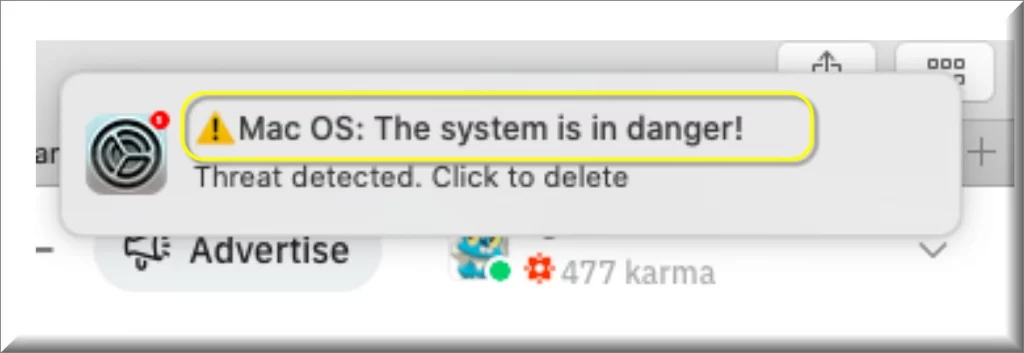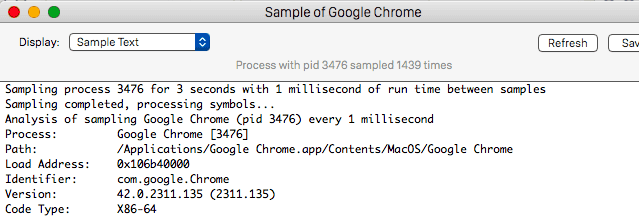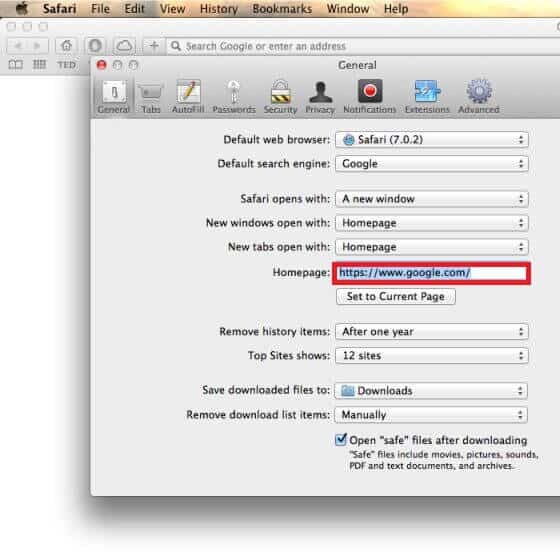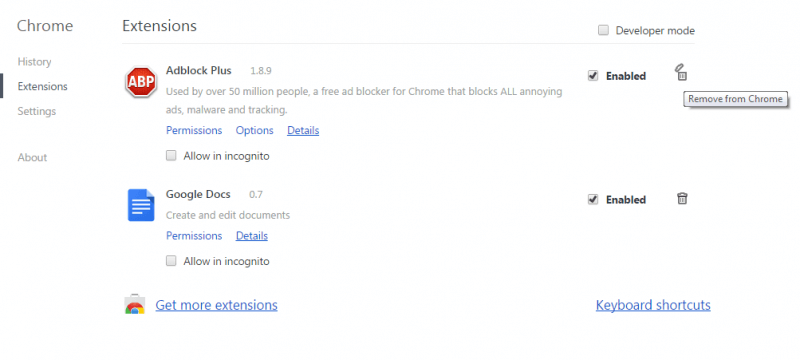Mac OS: The system is in danger
“Mac OS: The system is in danger” is a kind of software that is more commonly known as a browser hijacker. “Mac OS: The system is in danger” targets Mac users specifically, and therefore most Mac-compatible web browsers.

Thus, “Mac OS: The system is in danger” can integrate with the vast majority of popular browsing programs such as Chrome, Safari, Firefox, etc. And when it becomes part of the browser, it begins to take control over some of its settings. For example, one of the first changes that users notice have to do with the browser’s default search engine, which is usually replaced with a new and unfamiliar one. And that same search engine may also be set to substitute the previous browser homepage as well. This is usually done with the intention of boosting the traffic count for the respective website.
In addition, as a result of “Mac OS: The system is in danger”’s presence on your computer, your Safari or other browser may start triggering page redirects to seemingly random web locations as well. That’s not to mention the obscene amounts of popups, box messages and banners that your browser may start exposing you to. If you’ve had enough of all this irritating activity, then you may be eager to remove this software and all the changes it has imposed on you via your browser. And if that’s the case, then we have just the thing for you. Below is a detailed removal guide that will walk you through the steps necessary in order to completely uninstall “Mac OS: The system is in danger” and get rid of all its unwanted effects in your system.
Mac OS: The system is in danger for Mac
“Mac OS: The system is in danger” for Mac targets the browsing programs of web users in order to convert them into online advertising platforms. Usually, software like “Mac OS: The system is in danger” for Mac is designed to generate revenue for its developers via Pay Per Click and similar remuneration schemes.
Hence, the more times you click on a popup or banners displayed by “Mac OS: The system is in danger”, the more profit the creators of this browser hijacker will earn. However, this fact also entails certain practices that are generally frowned upon and may further motivate you to remove this application from your computer. Namely, “Mac OS: The system is in danger” may very well engage in gathering browsing data from your system and this information can be used to optimize the ads, but may also be sold on to third parties that you may not be aware of.
What is Mac OS: The system is in danger?
“Mac OS: The system is in danger” is often confused with viruses and malware, but this is a misconception. Browser hijackers like “Mac OS: The system is in danger” do not share the harmful capacities with malware and cannot harm your system.
Nevertheless, hijackers like this one and Propprethosnis are still tightly associated with the risk of landing a virus infection and this may occur as a result of being redirected to some sketchy website, for example. In that case you could very well be facing even highly dangerous code like Trojans and ransomware. For this reason we don’t recommend interacting with any of the ads generated by this hijacker.
The Mac OS: The system is in danger app
Developers typically rely on tactics like program bundling for the distribution of software such as the “Mac OS: The system is in danger” app. Hence, you may have installed the “Mac OS: The system is in danger” app alongside some other piece of programming that you recently downloaded.
SUMMARY:
| Name | Mac OS: The system is in danger |
| Type | Adware/Browser Hijacker |
| Danger Level | Medium (nowhere near threats like Ransomware, but still a security risk) |
| Symptoms | Various online advertisements appearing on the screen during browsing sessions, regardless of the websites visited |
| Distribution Method | Spam messages and other advertising programs, but mainly with the help of program bundles typically distributed on free file-sharing platforms. |
| Detection Tool |
Remove “Mac OS: The system is in danger” from Mac
For a quick way to remove “Mac OS: The system is in danger” try to do this inside your Mac browser:
- Open your Mac browser.
- Go to Preferences.
- Now navigate to the extensions sub-menu.
- Look for any unfamiliar entries, including “Mac OS: The system is in danger”.
- Remove “Mac OS: The system is in danger” from your Mac as well as any other suspicious-looking items by clicking on the trash bin icon.
If this does not help then continue reading this article for more detailed instructions on how to get rid of “Mac OS: The system is in danger”!

The first thing you need to do is to Quit Safari (if it is opened). If you have trouble closing it normally, you may need to Force Quit Safari:
You can choose the Apple menu and click on Force Quit.
Alternatively, you can simultaneously press ⌘ (the Command key situated next to the space bar), Option (the key right next to it) and Escape (the key located at the upper left corner of your keyboard).
If you have done it right a dialog box titled Force Quit Applications will open up.
In this new dialog window select Safari, then press the Force Quit button, then confirm with Force Quit again.
Close the dialog box/window.

WARNING! READ CAREFULLY BEFORE PROCEEDING!
Start Activity Monitor by opening up Finder, then proceed to ![]()
Once there, look at all the processes: if you believe any of them are hijacking your results, or are part of the problem, highlight the process with your mouse, then click the “i” button at the top. This will open up the following box:

Now click on Sample at the bottom:

Do this for all processes you believe are part of the threat, and run any suspicious files in our online virus scanner, then delete the malicious files:


The next step is to safely launch Safari again. Press and hold the Shift key while relaunching Safari. This will prevent Safari’s previously opened pages from loading again. Once Safari is opened up, you can release the Shift key.
On the off chance that you are still having trouble with scripts interrupting the closing of unwanted pages in Safari, you may need to take some additional measures.
First, Force Quit Safari again.
Now if you are using a Wi-Fi connection turn it off by selecting Wi-Fi off in you Mac’s Menu. If you are using a cable internet (Ethernet connection), disconnect the Ethernet cable.

Re-Launch Safari but don’t forget to press and hold the Shift button while doing it, so no previous pages can be opened up. Now, Click on Preferences in the Safari menu,

and then again on the Extensions tab,

Select and Uninstall any extensions that you don’t recognize by clicking on the Uninstall button. If you are not sure and don’t want to take any risks you can safely uninstall all extensions, none are required for normal system operation.
![]()
The threat has likely infected all of your browsers. The instructions below need to be applied for all browsers you are using.
Again select Preferences in the Safari Menu, but this time click on the Privacy tab,

Now click on Remove All Website Data, confirm with Remove Now. Keep in mind that after you do this all stored website data will be deleted. You will need to sign-in again for all websites that require any form of authentication.
Still in the Preferences menu, hit the General tab

Check if your Homepage is the one you have selected, if not change it to whatever you prefer.

Select the History menu this time, and click on Clear History. This way you will prevent accidentally opening a problematic web page again.
![]() How to Remove “Mac OS: The system is in danger” From Firefox in OSX:
How to Remove “Mac OS: The system is in danger” From Firefox in OSX:
Open Firefox, click on ![]() (top right) ——-> Add-ons. Hit Extensions next.
(top right) ——-> Add-ons. Hit Extensions next.

The problem should be lurking somewhere around here – Remove it. Then Refresh Your Firefox Settings.
![]() How to Remove “Mac OS: The system is in danger” From Chrome in OSX:
How to Remove “Mac OS: The system is in danger” From Chrome in OSX:
Start Chrome, click ![]() —–>More Tools —–> Extensions. There, find the malware and select
—–>More Tools —–> Extensions. There, find the malware and select ![]() .
.

Click ![]() again, and proceed to Settings —> Search, the fourth tab, select Manage Search Engines. Delete everything but the search engines you normally use. After that Reset Your Chrome Settings.
again, and proceed to Settings —> Search, the fourth tab, select Manage Search Engines. Delete everything but the search engines you normally use. After that Reset Your Chrome Settings.
If the guide doesn’t help, download the anti-virus program we recommended or try our free online virus scanner. Also, you can always ask us in the comments for help!

Leave a Reply